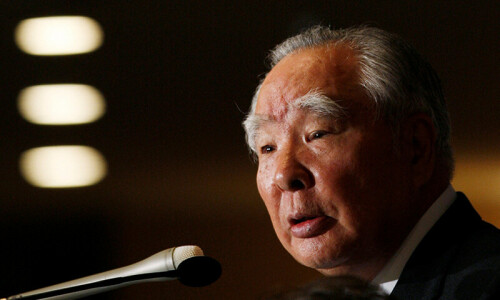WASHINGTON: When Michel Sadelain began his decades-long quest to genetically modify immune cells to fight cancer, his peers dismissed his ideas as absurd and even his mother grew concerned for his career.
On Thursday, the French and Canadian scientist was announced as a winner of the prestigious Breakthrough Prize for his pioneering work in CAR T-cell therapy, a new form of treatment that has shown exceptional efficacy against blood cancers.
“Over the years, I can’t tell you how many times I’ve heard this won’t work, can’t work, even if it works it has no future,” the 63-year-old told said in an interview.
He was passed up for grants, promotions became uncertain, and graduate students steered clear of joining his lab.
“One thing I have to do is to throw a big party with all those who contributed,” Sadelain said, laughing. He will split $3 million with American immunologist Carl June, who also led groundbreaking research into the field independently of his co-winner.
The Breakthrough Prize awards “the world’s most brilliant minds” in fields including life sciences, fundamental physics and mathematics, styling itself as the Silicon Valley-backed answer to the Nobels. Founding sponsors include Sergey Brin, Priscilla Chan and Mark Zuckerberg.
Living drugs
Sadelain studied medicine in Paris, then immunology in Canada, before taking up postdoctoral research at the Massachusetts Institute of Technology in 1989.
At the time, there was great interest in developing vaccines to train the immune system to recognise and destroy cancer cells, in the same way it can be taught to tackle foreign invaders such as bacteria and viruses.
“But I started thinking that perhaps we should learn how to directly instruct the fighters of the immune system, in particular the T-cells,” he said, with his early work focused on mice.
After moving to the Memorial Sloan Kettering Cancer Centre in New York, Sadelain developed a way to use a disabled virus to genetically re-programme human T-cells, so that they grew claw-like structures called antigen receptors, allowing the T-cells to target specific cancer cells.
Published in Dawn, September 15th, 2023














































Dear visitor, the comments section is undergoing an overhaul and will return soon.